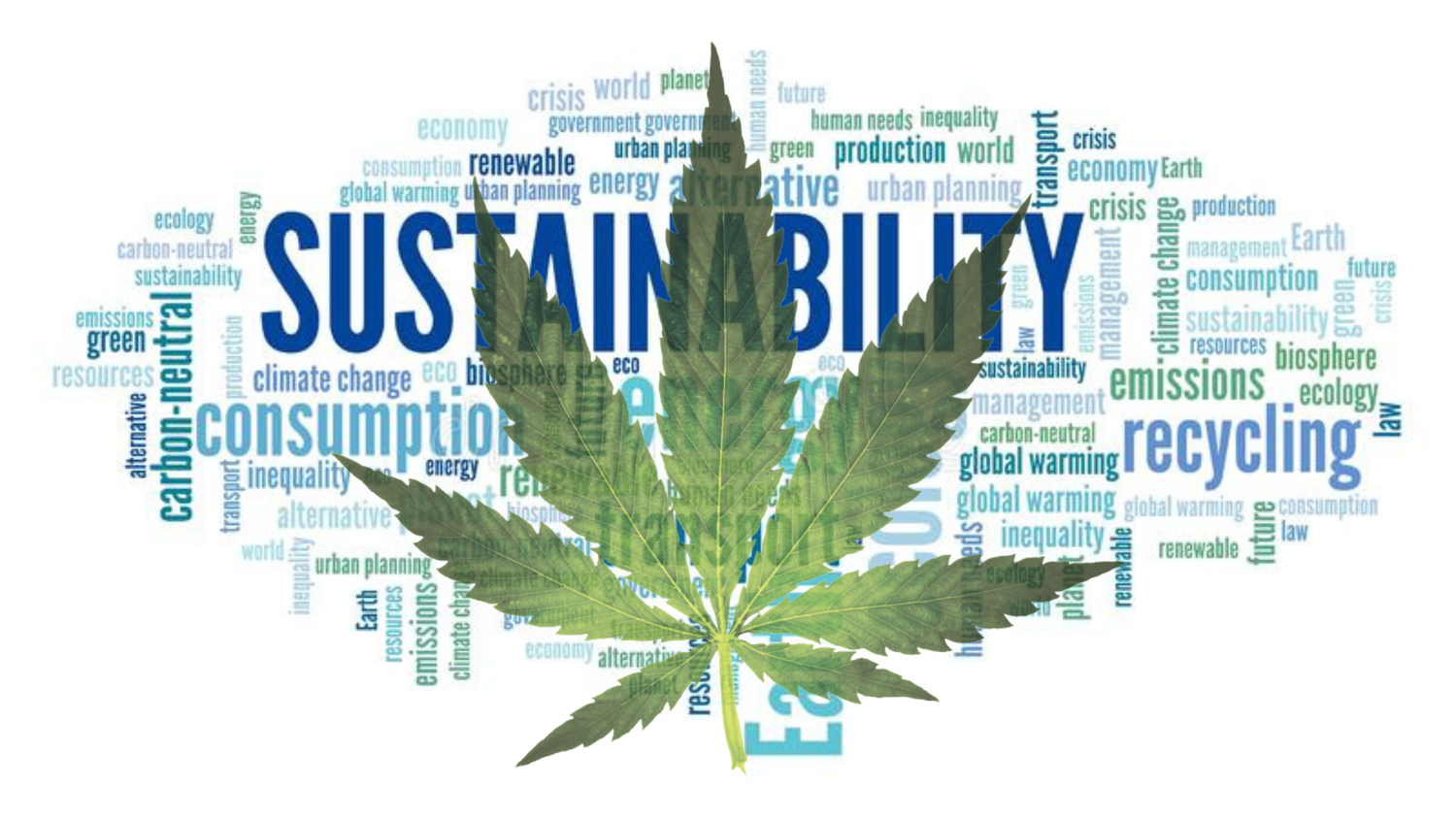
We currently find ourselves in the middle of what has historically (and I dare say affectionately) been referred to as the “dog days” of summer. This term is literally an ancient one, having roots that include Latin, Greek, and Egyptian metaphors.
While this stifling period has long been with us, it feels especially heavy this year as the implications of climate change are being felt in an incredibly pronounced way. We are all experiencing or at least painfully aware of so many disastrous weather circumstances, and many are concerned these changes are progressing to a point where the existential threat is irreversible.
To help stem that tide, the SEC is taking steps to require companies under its auspices to report climate-related exposure. While this process is still being refined, it is a big step in the right direction as it obligates a level of transparency that will help put us on a path to sustainability that is desperately needed.
The cannabis industry continues to explore sustainability and all the broader environmental, social, and governance (ESG) ideals. Companies in the space, including both operators and ancillary industry participants, are taking concrete steps to advance this cause.
There are countervailing forces making this progress a bit more difficult. Economic challenges like inflation and supply chain disruptions are making cannabis products less affordable. The capital markets are particularly tenuous, which makes it more difficult for operators to be innovative in ways that should culminate in progress on the sustainability front. A host of complex political issues are making climate and cannabis issues less of a priority, which in turn makes the work of advancing sustainability arguably more critical.
Still, the momentum is there, and the time to build and grow your sustainability plans is always now. To add fuel for your journey…
The Hippie’s Dilemma
I recently had the pleasure of speaking with Yann Risz, Co-Founder and Managing Director of Aligned Incentives, which helps companies measure and reduce their carbon footprint. Their clients include customers as diverse as Amazon, McDonald’s, Altria, Reynolds American (subsidiary of BAT), and HPE.
Yann drew on his and his AI colleagues’ unique experience to reflect and offer lessons on the sustainability opportunity being presented to our industry, and what all participants should be doing now and into the future to rise to meet it. Read on for excerpts from our conversation.
Why are you referring to cannabis sustainability as the “Hippie’s Dilemma”?
The bottom line is that a pound of cannabis has more than 100 times the global warming potential of a pound of beef. Think of the pressure the beef industry is under today when it comes to climate change, with calls to reduce consumption and even eliminate production altogether. It’s only a matter of time before the cannabis industry faces similar, if not greater, pressure for its environmental impacts.
Pressure will come from various sources, including regulators and stakeholders. For example, the SEC recently announced an initial approval to a rule requiring all public companies to disclose their climate-related impacts. Many larger companies already report their emissions to platforms like the Carbon Disclosure Project (CDP), largely driven by the demands of stakeholders.
But maybe most importantly, pressure from customers is likely to ramp up the most, as more people become aware of the environmental impacts associated with cannabis production. At the risk of playing with stereotypes, we have a “Hippie’s Dilemma,” as some of the same consumer profiles that berate beef consumption are consumers of cannabis.
The opportunity for cannabis brands to get ahead of the issue is tremendous and timely. In five years, we should expect most main cannabis producers to have similar claims around sustainability. The opportunity is to move now, while there are still significant differentiation opportunities in the market.
Can you share some perspective on your work in the industry – what are best practices?
The industry has been dealing with other priorities to date, in particular regulatory pressures, so most players are still at the ground level when it comes to sustainability. The good news is that they don’t need to reinvent the wheel and can follow the path of leaders in other agriculture-based industries. To ramp up their sustainability programs, companies need to follow four steps:
-
Draw the map, i.e., calculate your footprint.
We recommend using robust methodologies like life cycle assessment. This is a bit wonky talk, but critical to understand. Life cycle assessment (LCA) is the methodology used to calculate the impacts of products and services, throughout each stage of the supply chain and across a wide variety of impact categories, such as greenhouse gases (GHG) and water. But a life cycle assessment is only as good as the underlying data. Too many companies calculate footprints with very high-level data that are based on averages, not actual production processes and local conditions. Such assessments have limited use when it comes to informing data-driven decisions, such as identifying the most effective way to spend your next dollar to get the maximum impact reduction. Collecting the necessary data to perform such assessments is essential for any company serious about mitigating its climate change impacts. When tradeoffs are present, it’s important to prioritize gathering accurate and material data over focusing on the granularity of the data. It can be highly beneficial to work with experienced professionals on this step. Understanding what data are available and where to prioritize data collection efforts can save precious time and resources. You should expect this effort to take anywhere from 3 to 9 months, depending on knowledge and experience. -
Once you’ve drawn the map, determine your path.
Impacts will vary regionally based on climate conditions, the electricity grid, local watersheds, operational characteristics, and other specificities. For example, energy required for humidity mitigation for indoor production will be a more prevalent source of greenhouse gas emissions in states like Florida, but immaterial in dryer regions. However, regardless of location, HVAC systems and lighting are two of the main drivers of GHG emissions for indoor production systems. As a result, the source of your electricity can substantially influence the carbon footprint of an indoor production facility. But you will also need to balance this impact with other issues, such as local water scarcity due to the water-energy nexus. Having good data in Step 1 will be essential in identifying which improvement projects make the most sense from both a footprint and a financial standpoint. Count about 6 to 12 months for Step 2. -
Set your targets.
This step can be done in less than a month, but it is critical to get this right the first time! Your progress will be measured against these targets for many years, and re-baselining targets can be very resource-intensive. In the past, companies tended to have somewhat ambiguous targets that sounded more like taglines than meaningful, verifiable objectives (e.g., “reduce emissions” rather than “30% reduction by 2030”). Nowadays, most companies follow the guidelines set by the Science-Based Targets initiative. Science-based targets are aligned with the Paris Agreement – aiming to limit global temperature increases to well-below 2⁰C above pre-industrial times. Taking it one step further, many companies are now committing to the Net-Zero Standard. Net-Zero targets aim to eliminate a company’s contribution to global warming through dramatic emission reductions and mitigation efforts. We recommend setting such targets after at least starting Step 2, as this will enable companies to understand the financial and operational implications of target-setting. In our experience, too many companies set lofty goals, only to find that they are not realistic, neither timewise nor financially, as they move to Step 4. -
Implement and refine.
Reality seldom matches plans, even the most robust ones. Best practice is to assess and compare mitigation alternatives on a yearly basis and reallocate resources to the projects that have the most success in reducing carbon per dollar. Low-hanging fruit are – by definition – fairly easy to achieve, but ambitious targets like Net-Zero require companies to go beyond what is easy. Identifying the best alternatives requires a financially disciplined and data-driven process.
Do you have a thought you want to leave us with?
As we move through this third COVID summer, I will reflect on a funny experience that encapsulates what this is all about. During the height of COVID and shop closures, I was walking down a street in Berkeley and passed a poster that made me smile: “Marijuana is legal, and haircuts are against the law. It took half a century, but hippies finally won.” Hippies have started to struggle again as hairdressers have reopened and lots of economic pressure is being placed on cannabis industry dynamics. Let’s work together to make cannabis the sustainability brand that does not fundamentally contradict their values. The upside is huge.


